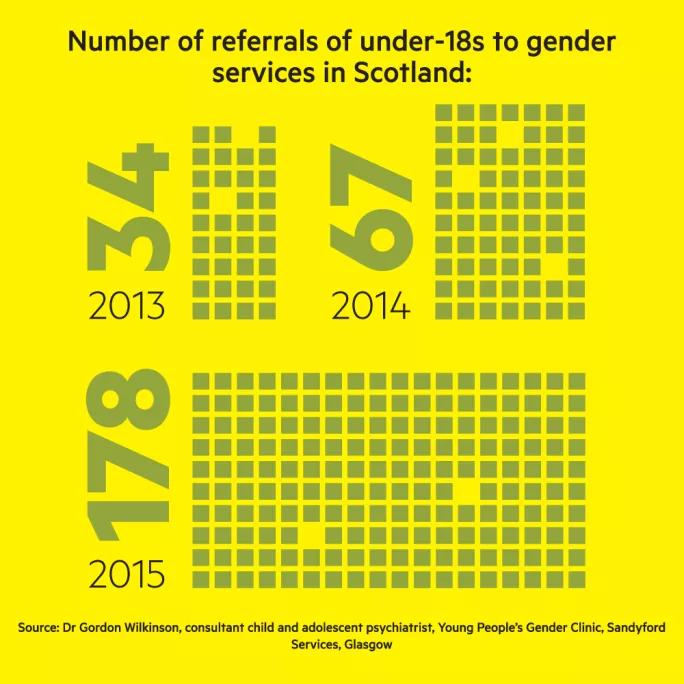When ignorance reinforces transphobic bullying

Ignorance and a lack of confidence at senior management level, rather than outright hostility, are at the root of most problems faced by transgender people in schools, a conference in Edinburgh has heard.
Delegates at an event on transgender equality were told that, although most schools are well-meaning, pupils may not be allowed to use certain toilets, wear clothes they feel comfortable in or go on residential trips.
Sometimes they are subject to bullying and negative attitudes, with young transgender people facing volleys of intrusive questions about their bodies and, in one extreme case, being humiliated by a teacher in front of an entire class.
A 2012 survey by LGBT Youth Scotland revealed that bullying of transgender young people was rife in schools - and more common than in colleges or universities. It found that 63 per cent would not feel confident about reporting transphobic bullying at school.
James Morton, manager of the Scottish Transgender Alliance, said that failing to use people’s preferred pronouns amounted to “harassment” and contributed to a “hostile and degrading environment”.
But he explained to TESS after his presentation to the Holyrood Events conference on transgender equality: “The majority of schools are well-intentioned. It’s ignorance rather than hostility in most schools [that causes problems]. A lot of the time it’s senior management not feeling very confident.”
Public humiliation
There were “some transphobic teachers”, however, and schools that took hardline approaches to certain issues by, for example, refusing requests from parents to use a transgender pupil’s new name and insisting that they had to stick to what was on their birth certificate.
In one incident in a secondary school, a trans pupil who identified as male was ordered by a teacher to stand on a desk in front of his peers, Mr Morton said. The teacher then pointed at his chest area and said, “You have breasts - you’re a boy, not a girl.”

Elsewhere, schools were sometimes worried about accommodating transgender pupils by, for example, allowing them to use girls’ toilets and changing rooms after changing from male to female, in case there were complaints from other pupils’ parents.
Gordon Wilkinson, consultant child and adolescent psychiatrist at the Sandyford Services Young People’s Gender Clinic in Glasgow, said that schools could be “a difficult environment” for transgender young people,
He cited dance classes and strict gender-based uniforms as common causes of anxiety.
‘Zero tolerance’ approach
Schools have to take a “zero tolerance” approach to transphobic bullying, which might include “over-curious questioning” from transgender pupils’ peers about personal bodily issues, Dr Wilkinson said. He knew of some schools that considered such behaviour perfectly acceptable.
Graeme Robertson, deputy rector at the High School of Glasgow, who attended the event, said that his school was exploring how to be sensitive to transgender pupils’ needs around issues such as changing rooms and toilets.
He has closely followed the positive reaction at Brighton College - a private school in England - after it did away with distinctions between boys’ and girls’ uniforms in an attempt to accommodate transgender pupils.
But Mr Robertson added that last week’s event drove home the need to help the country’s transgender pupils prepare for life after school, when they may be entering much harsher environments.
Jonathan Haine, Perth Grammar’s principal teacher of pupil support, said that the conference had underlined the importance of being “very careful” with language, because using the wrong pronouns could be wounding to transgender pupils.
You need a Tes subscription to read this article
Subscribe now to read this article and get other subscriber-only content:
- Unlimited access to all Tes magazine content
- Exclusive subscriber-only stories
- Award-winning email newsletters
Already a subscriber? Log in
You need a subscription to read this article
Subscribe now to read this article and get other subscriber-only content, including:
- Unlimited access to all Tes magazine content
- Exclusive subscriber-only stories
- Award-winning email newsletters